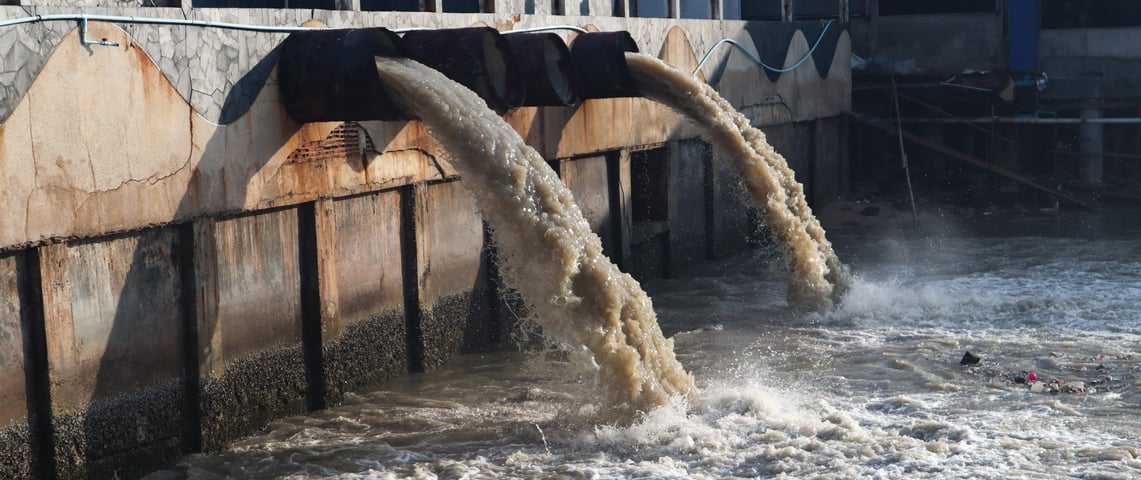
Wastewater treatment plays a pivotal role in safeguarding public health, preserving the environment, and sustaining economic development. By purifying water contaminated by domestic, industrial, and agricultural activities, wastewater treatment plants mitigate the spread of harmful pathogens, toxins, and pollutants, preventing waterborne diseases and protecting ecosystems. Additionally, treated wastewater can be recycled for various purposes, such as irrigation, industrial processes, and replenishing natural water bodies, thus alleviating the strain on freshwater resources. Furthermore, effective wastewater treatment contributes to reducing the ecological footprint associated with pollution, conserving biodiversity, and supporting the overall well-being of communities.
Emphasizing the importance of wastewater treatment underscores our commitment to environmental stewardship and ensuring access to clean water for present and future generations.
Membrane distillation is a thermally driven process in which only vapor molecules are transported through a porous hydrophobic membrane. The purpose of the hydrophobic membrane is to act as a barrier that prevents liquid from passing through but allows liquid vapor penetration. As only gaseous substances are allowed to pass through the membrane, all the macromolecules and ions in the wastewater could be rejected by the membrane. However, the interaction between the membrane and the ingredients in the wastewater significantly affects the properties of the membrane. As hydrophobicity of the membrane is key, membrane fouling and wettability are important to predict the long-term operation of the membrane.
The composition of the wastewater can vary significantly depending on its source. For example, in the desalination process, water contains a high percentage of salts, wastewater from the textile industry has dyes and detergents whereas the oil industry produces oily wastewater. Contact angle measurements are commonly used to understand interactions between different types of membrane materials and wastewater.
Distillation membranes are most commonly made out of polymers such as polyvinylidene fluoride (PVDF), polypropylene (PP), and polytetrafluoroethylene (PTFE). Sessile drop contact angle measurements are done with solution, mimicking the properties of the wastewater, and the membrane material. The measurement is fairly straightforward as a drop is readily placed on the surface of the membrane. However, the porosity and roughness of the membrane make result interpretations sometimes challenging. Ingredients in wastewater, such as surfactants and oils, can modify the properties of the membrane from hydrophobic to more hydrophilic, which will in the longer term lead to the failure of the membrane. Understanding the underlying phenomena can help researchers improve the membrane materials for longer membrane lifetimes and also predict the lifetime so that membrane replacement times can be optimized.
If you are interested in learning more about how contact angles can be measured. Please download the white paper below.
Yu-Xi Huang, et.al. “Interpreting contact angles of surfactant solution on microporous hydrophobic membranes”, Journal of Membrane Science Letters 2 (2022) 100015
Yan, et al. “Membrane Distillation for wastewater treatment: A mini review”, Water 13 (2021) 3480.Learn about the effect of surface roughness and wettability on biocompatibility of biomaterials and medical devices.
This blog post describes the importance of fiber diameter on the contact angle measurements of fibers with Wilhelmy method
Standard contact angle measurement considers the surface's chemical properties. The influence of surface roughness is added by utilizing the Wenzel equation.
Wettability is crucial in biomedical applications as it affects protein adsorption, cell adhesion, blood coagulation, and bacterial colonization.
Liquids’ ability to wet a solid surface has widespread importance in many everyday products and industrial processes.
Hydrophobic surface properties are needed in contact with the food product while hydrophilicity is needed when printing on food packaging.
Wettability is pivotal in pharmaceutical dosage form manufacturing as well as in drug efficacy.
Understanding the wettability of membranes is essential for optimizing these processes and achieving desired separation outcomes.
